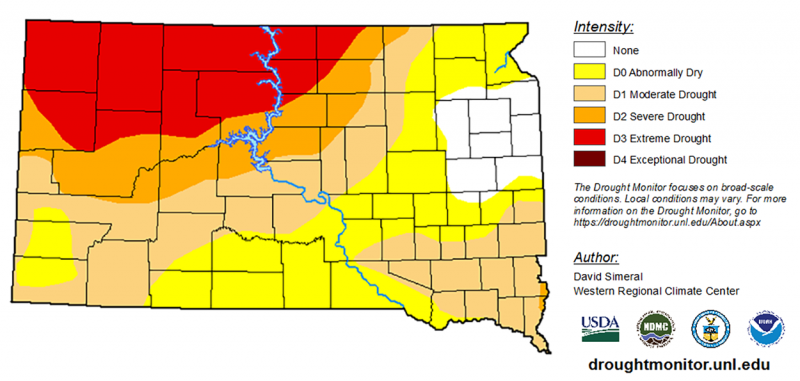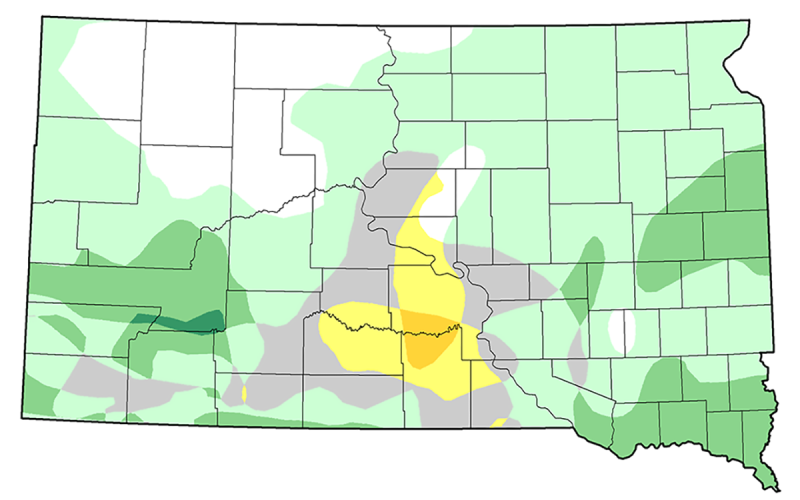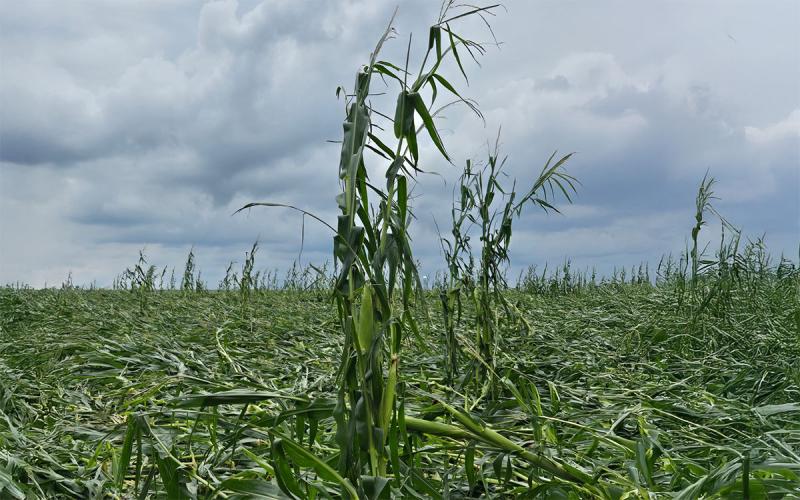Originally Published: May 14, 2021
Written collaboratively by Adam Varenhorst; Philip Rozeboom; Patrick Wagner; Sara Bauder; Jonathan Kleinjan, former SDSU Extension Agronomist; Ruben Behnke; and Nathan Edwards.
With corn planting well underway in South Dakota, the next step is monitoring its emergence. One of the factors that can speed up or delay corn emergence is air temperature. On average, corn requires approximately 90–120 growing degree days (GDDs) to emerge. However, field conditions and planting date can change the number of GDDs required (Table 1).
Growing Degree Day Adjustments
| Field Conditions | Specific Factor | Growing Degree Day (GDD) Adjustment | Source |
|---|---|---|---|
| Soil Texture | Fine | Add 30–60 GDD | Swan et al. 1987 |
| Course | Subtract 30–60 GDD | Swan et al. 1987 | |
| Residue | % in-row residue cover | Add 5 to 50 GDD | Swan et al. 1987 |
| Planting Date | Before April | Add 10–25 GDD | Swan et al. 1987 |
| After May 15 | Subtract 50–70 GDD | Swan et al. 1987 | |
| Seed Zone Soil Moisture | Below optimum | Add 30 GDD | Scheider and Gupta 1985 |
| Seed Bed Condition | Soil crusting or massive clods | Add 30 GDD | Scheider and Gupta 1985 |
| Seeding Depth | For each inch below two inches | Add 15 GDD | Hunter and Kannenberg 1972 |
| Severe drought or heat stress | Corn will not germinate until it absorbs 30% to 35% of its seed weight in water |
|
Abendroth et al. 2011 |
*Table adapted from Elmore and Mueller. 2015. Growing degree units and corn emergence. University of Nebraska CropWatch.
Predicting Corn Emergence With Growing Degree Days
Corn growing degree days are calculated using the following equation:
(Maximum daily temperature + Minimum daily temperature) ÷ 2 - 50 degrees Fahrenheit

Corn growth and development occurs between 50 degrees Fahrenheit and 86 degrees Fahrenheit. If the minimum (low) or maximum (high) daily temperature exceeds these values in either direction, these base development temperatures should be substituted into the equation in place of the actual high or low daily temperature.
Table 2 contains current GDD estimates for several locations throughout South Dakota and uses the corn insurance date as a starting point. Ideally, the calculations would start on the date a field was planted. For this reason, these are general estimates. For most of South Dakota, enough growing degree days have been accumulated without consideration of field conditions for corn to be emerging. Emergence may be delayed in areas that are abnormally dry or experiencing extreme drought conditions (Figure 1).
| Location |
(GDD) Since April 10, 2021 |
|---|---|
| Antelope |
|
| Baltic |
|
| Beresford |
|
| Bison |
|
| Britton |
|
| Brookings |
|
| Colton |
|
| Cottonwood |
|
| Dakota Lakes |
|
| Eagle Butte |
|
| Flandreau |
|
| Gettysburg |
|
| Groton |
|
| Hamill |
|
| Jewel Cave |
|
| Lemmon |
|
| McIntosh |
|
| McLaughlin |
|
| Mound City |
|
| Nisland |
|
| Oak Lake |
|
| Parkston |
|
| Redfield |
|
| Rosebud |
|
| Sioux Falls |
|
| South Shore |
|
| Sturgis |
|
| Volga |
|
| Webster |
|
| White Lake |
|
*Data for calculating growing degree days was obtained
from the South Dakota State University Mesonet.
Sources:
- Abendroth, L. J., R. W. Elmore, M. J. Boyer, and S. K. Marlay. 2011. Corn growth and development. Iowa State University.
- Hunter, R. B. and L. W. Kannenberg. 1972. Effects of seed size on emergence, gain yield and plant in corn. Canadian Journal of Planting Science 52: 252-256.
- Schneider, E. C. and S. C Gupta. 1985. Corn emergence as influenced by soil temperature, matric potential and aggregate size distribution. Journal Soil Science of America 49: 415-422.
- Swan, J. B., E. C. Schneider, J. F. Moncrieg, W. H. Paulson, and A. E. Peterson. 1987. Estimating corn growth, yield, and grain moisture from air growing degree days and residue cover. Agronomy Journal 79: 53-60.


